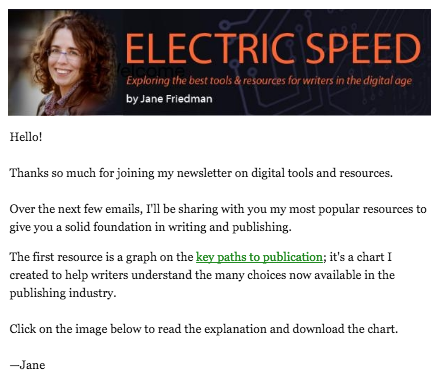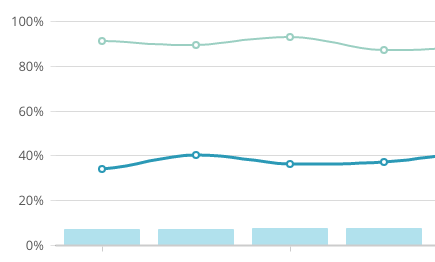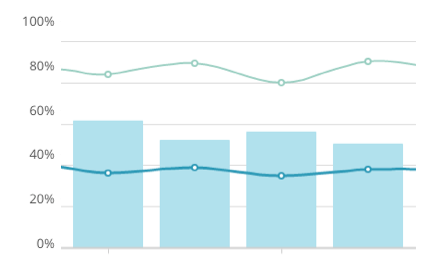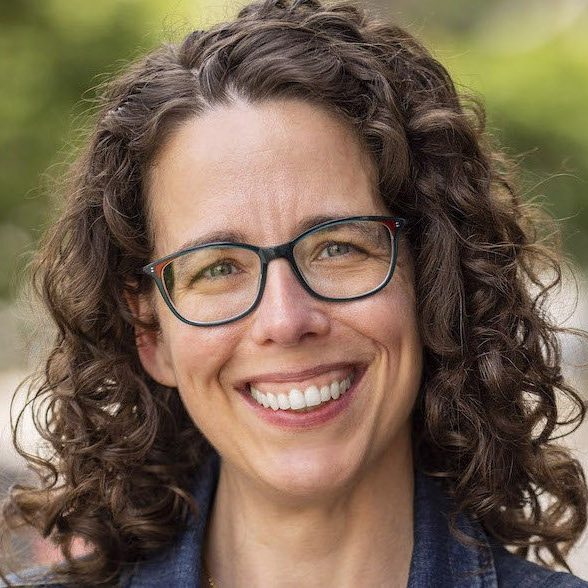
Last week, I discussed why I added a pop-up form to my site (which gathers email newsletter subscribers); the following post explains what happens once people join my list. What you do after the sign up is important as the pop-up itself.
First, my newsletter call-to-action doesn’t offer a freebie.
When asking for someone’s email address, it’s extremely common to offer something free in return, such as an ebook, tip sheet, or other instantly downloadable benefit. I don’t do this; my theory is that it leads to high churn, or a significant number of people joining my list just to get a free-something-or-other. If I offer something for free, I’d rather not have any strings attached or make it contingent on getting someone’s email address. (That said, I know this strategy works, and I don’t begrudge anyone who uses it.)
What I do instead: Once people have joined my list, my thank-you message and page tells them that I believe every professional author should learn how to read basic contract language. I then offer a link to a PDF download of a Contracts 101 article I published a few years ago. I’d rather delight people with something they didn’t expect, not bribe them at the outset.
Next, subscribers receive a welcome series of emails.
Since my Electric Speed newsletter is only sent once every two weeks, it’s not uncommon for people to forget they signed up, especially when they quickly join with a pop-up. If someone has only visited my site once and hasn’t seen my work before, they may not even remember my name.
So last year I began using an autoresponder, which is a way of automatically sending emails based on certain triggers. I created a welcome series of three messages that introduce people to some of the most key posts and information I make available for free.
Here’s a screen capture of the first message:

This message is sent immediately after someone signs up for my list, and I make it clear the message is part of a welcome series. I keep it short and sweet.
The next two messages—also very short—offer resources on topics that I’m often asked about: how to build an author platform, and where to find process checklists for publishing and marketing. (Each of these are sent once 5 days have passed from the previous message.)
I make it clear on the third message that it’s the last one in the welcome series, and the next message will be the Electric Speed newsletter. I also welcome people to email me if they’re looking for specific information or advice they haven’t been able to find at my site.
Here are the aggregate open and click rates for my autoresponder series, before and after I added the pop-up to my site. (The blue bar represents the volume of new subscribers.)


As you can see, the behavior of subscribers has remained about the same after adding a pop-up to my site. This indicates I’m getting quality subscribers.
My Electric Speed newsletter open and click rate has remained healthy, although there is a perceptible decline in both metrics as the list size doubled. However, this may have more to do with changes in my subject line strategy than the quality of pop-up subscribers. Time will tell.

I’ve been using an autoresponder series for less than a year, and I haven’t done any A/B testing, or even closely studied best practices. But my primary goal is to stick in people’s minds after they subscribe, be demonstrably helpful with free information and resources (without asking for a purchase), and show that I’m available to answer questions.
If you have experience with autoresponders, I’d love to hear from you in the comments.

Jane Friedman has spent nearly 25 years working in the book publishing industry, with a focus on author education and trend reporting. She is the editor of The Hot Sheet, the essential publishing industry newsletter for authors, and was named Publishing Commentator of the Year by Digital Book World in 2023. Her latest book is The Business of Being a Writer (University of Chicago Press), which received a starred review from Library Journal. In addition to serving on grant panels for the National Endowment for the Arts and the Creative Work Fund, she works with organizations such as The Authors Guild to bring transparency to the business of publishing.

[…] view post at https://janefriedman.com/pop-strategy-part-2-autoresponder-series/ […]
I read your first pop-up information ( since my subscription to my website achieves nothing- not even with a free book offered) and I went to enrolling with mailcrunch immediately to emulate. What I then discovered was that an exit-intent pop-up ( so much more diplomatic) was not compatible with Wp.com only .org. An alternative Mailchimp ‘arrival’ pop-up is the only option! I have yet to master doing that.
I so agree with your distaste for bribes, and favouring unexpected gifts instead. I have never needed to be bribed to read everything you write or repost. Just wanted to register an immunity to pop-ups! But also to thank you for unbelievable help across the whole spectrum of choices.
Thank you, Philippa. You’re right, Mailmunch (as well as similar tools, such as SumoMe) can be used only if you have a self-hosted WordPress site, not the .com version. Sorry for not making that more clear!
I also don’t offer freebies but your pop up post motivated me to turn on one on my site (hits at 50% mark) and the results so far are strong. I haven’t looked at my autoresponder (I too have a 3 email series) stats to validate quality. Although at this point I’m on such an expensive Mailchimp plan that additional subscribers don’t matter to my cost so I’m less concerned about quality.
I will say – just for brand consistency, I might consider making your newsletter header match your blog (color scheme, wheel, headshot of you) so there’s no disconnect between their email experience and blog experience. But that’s just my personal preference.
Thank you, Alexis!
Another insightful post, Jane. Appreciate the details and charts. While I plan to use an “opt-in incentive” (I don’t consider it a bribe, but rather part of the informal contract or reciprocity of exchanging an email address for something of unique value), I’m not sure about the autoresponder sequence in the early stages of site launch. Mainly in terms of cost. ***Q: Do you or anyone know of FREE autoresponder systems? (MailChimp calls it “automation” but I only see it on its paid platform) Thanks for feedback!
Hi Harald, I’m afraid I don’t know of a free autoresponder (or automation feature), although when I tried Googling “free autoresponder,” a few services did show up. Not sure I would quite trust them—they probably put their own ads in the emails, for instance, or do something else that’s undesirable.
Thanks for reply, Jane. Yeah, that was my guess, too (free undesirable) but will keep looking and considering.
Harald, MailerLite offers free automation and I like using them a lot. I’m making the switch to them from MailChimp and have been happy with their service so far. They also offer website popups and integration with a lot of online tools.
Great tip, S.J. Will be checking it out. Thanks!
Another great post! I do offer incentives to sign up to my list, giving away books I have on permafree and an exclusive book just for mailing list subscribers. I was hesitant to do this, also because of churn, but many people have given those books a try that normally wouldn’t have picked them up, and become fans. I’m pretty happy with the response!
My auto-responder sequence is 7 emails long and keeps people engaged over a 3 month period. So far it’s been working well and the people who are not interested in my content drop off, which is what I want anyway. The auto-responders are really key!
I appreciate a real conversation about this specific piece of blogging/newsletter writing. I just started a new website and wrestled with how to handle the pop-up situation. It’s hard to strike a line between annoying people and inviting them to join a community. I tend to get annoyed easily by pop-ups, and I always want to be the one seeking contact. But it’s important to inform readers of what you offer. Thank you for posting practical thoughts on the subject.
Thank you, Leanne. It is a hard balance to strike, I agree.
[…] I’ve also written a follow-up post offering more stats and an explanation of autoresponders. […]
I do provide my new subscribers a bonus when they join but it isn’t promoted as either a bribe or a “gift” in the traditional sense. My focus is building resilience, so new community members receive a guide that lays the foundation for that concept by briefly dispelling common misconceptions, illustrating how it contributes to our lives on a daily basis, how anyone can increase their capacity, and includes links to cornerstone content. I have never experienced ‘churn’ with my subscribers, in fact, I have an extremely low turnover and high open rate, so for me, the bonus as a foundational tool has worked extremely well.
As for autoresponders, I’ve used Aweber since I began blogging 6 years ago, but my newsletter is weekly so I keep the welcome to just 2 emails rather than overwhelm new subscribers.
Good to hear, thank you!
Interesting insight, Jane — thanks for sharing! As you know, the move away from freebie incentives for new subscribers has been in play for a while… your experience with pop-ups and offering content/update-only subscription supports the wisdom in this approach.
I actually didn’t know about the trend, but I’m not surprised. 🙂
[…] people online. Kristen Lamb discusses how to grow your author blog, Jane Friedman talks about her use of autoresponders in her marketing campaigns, Melissa Flickinger explains why Buffer is the perfect social media manager, and Frances Caballo […]